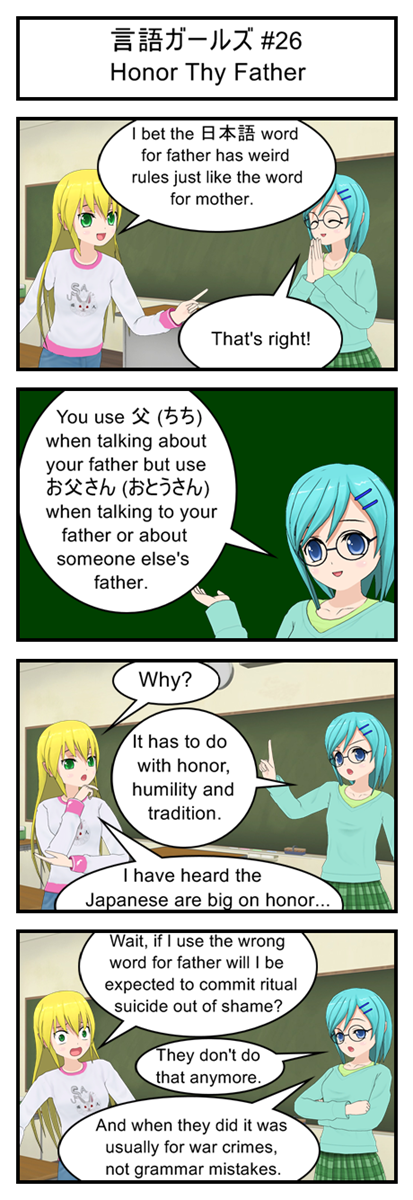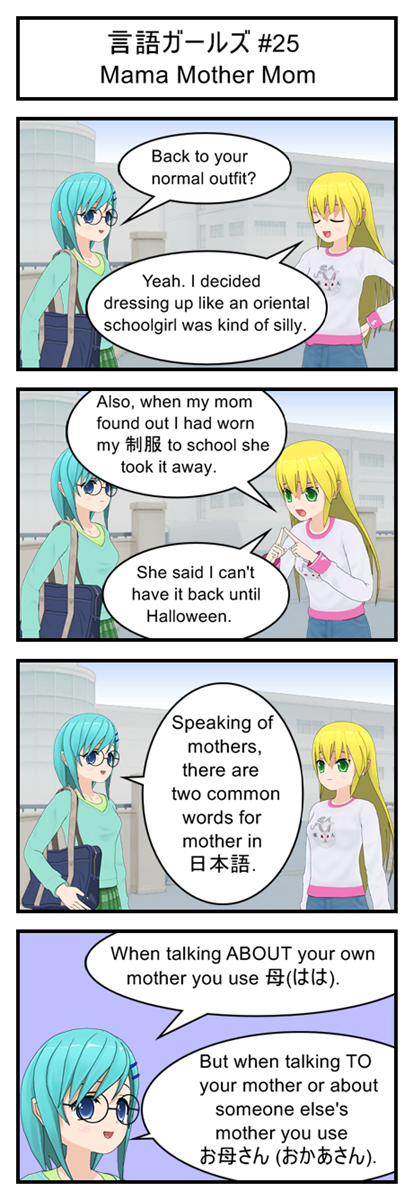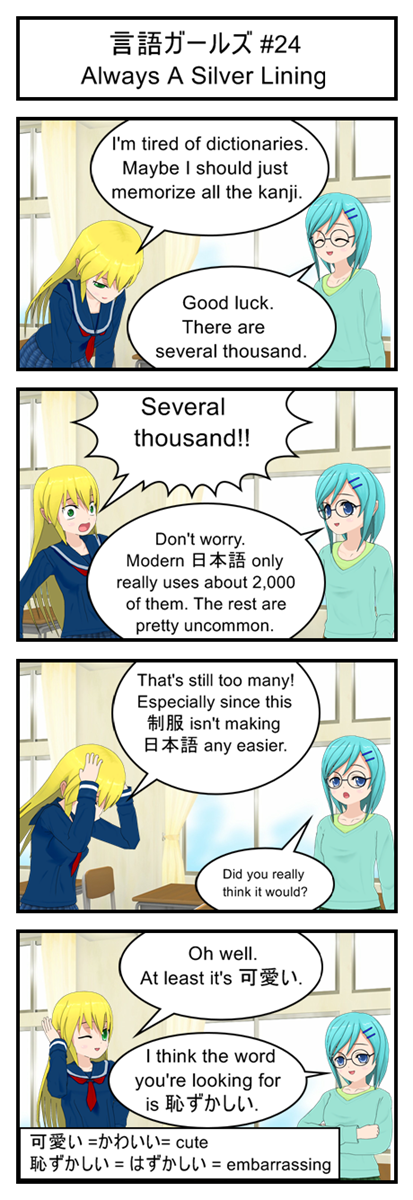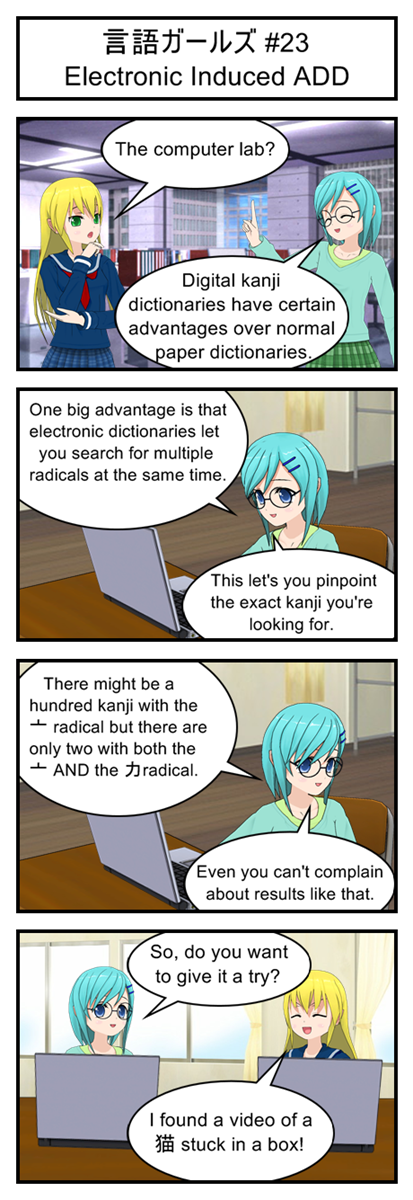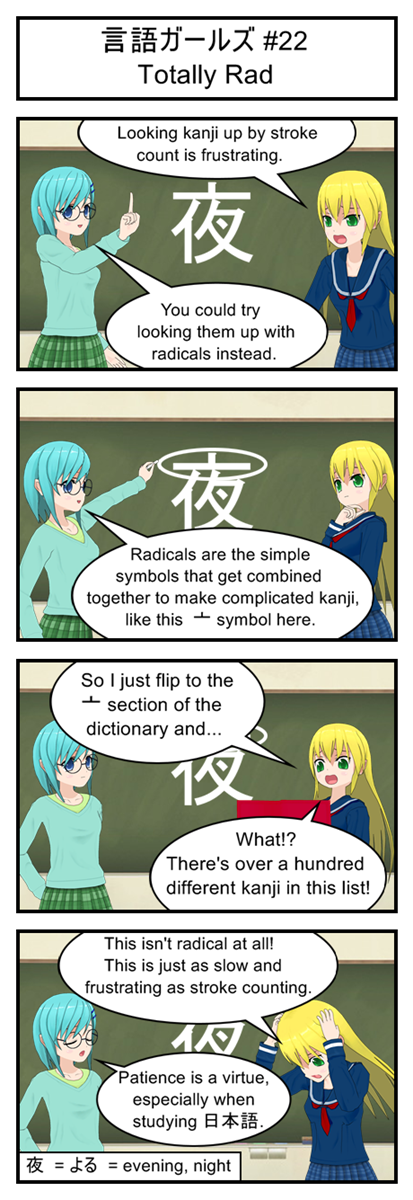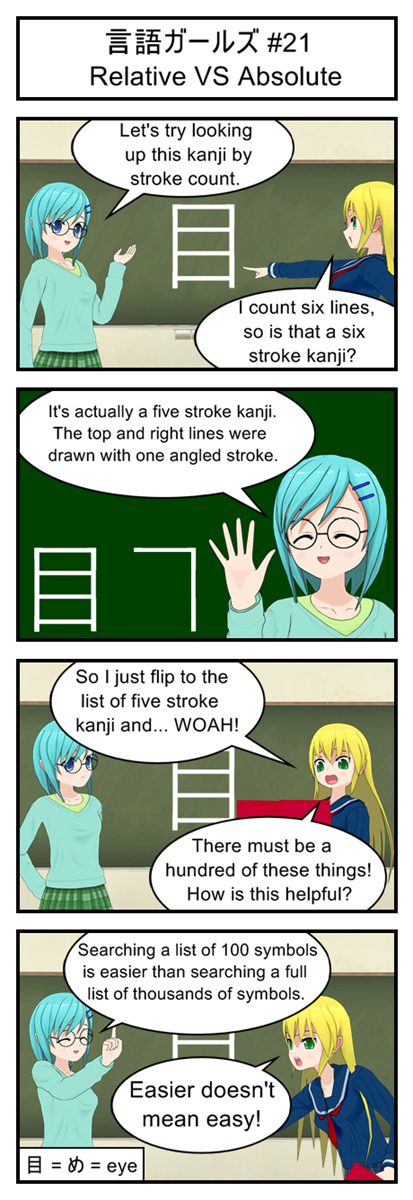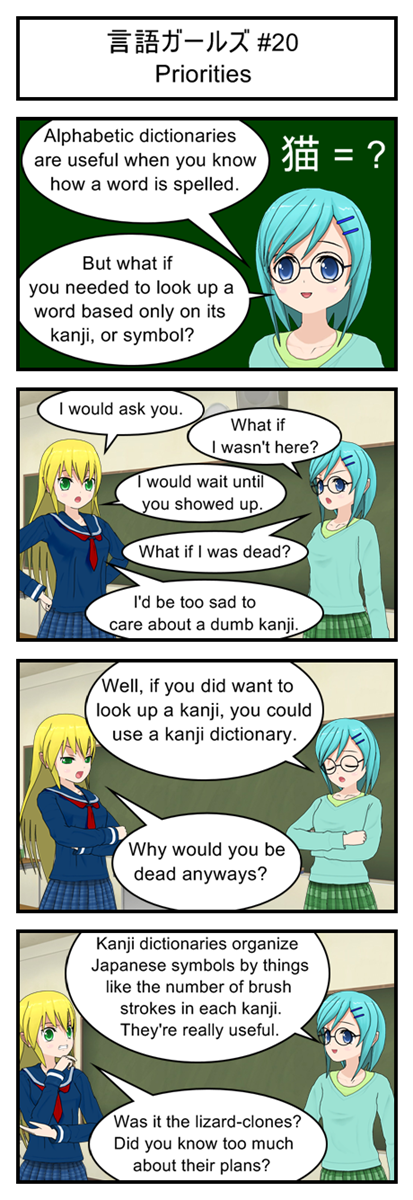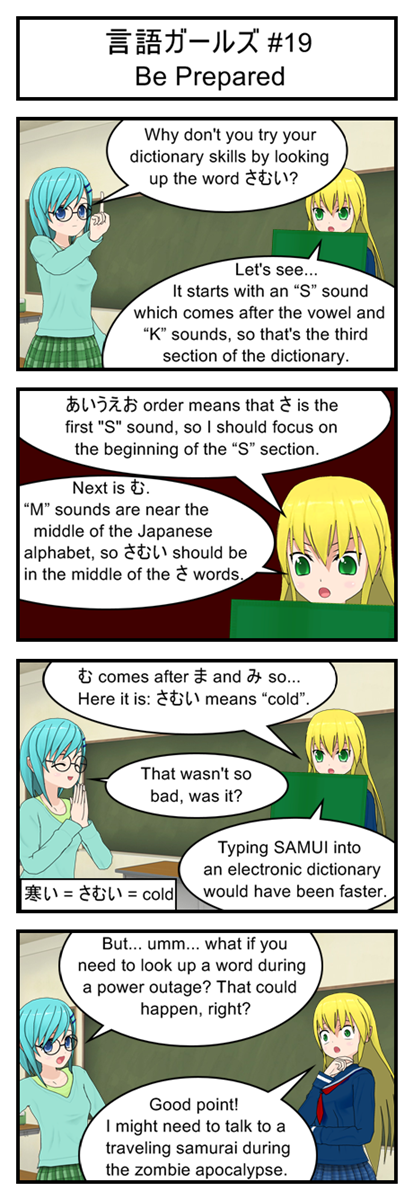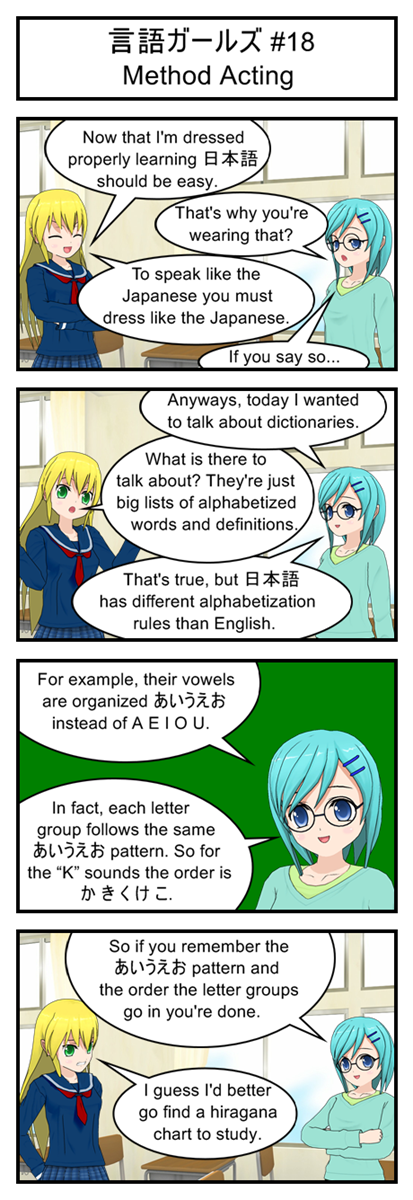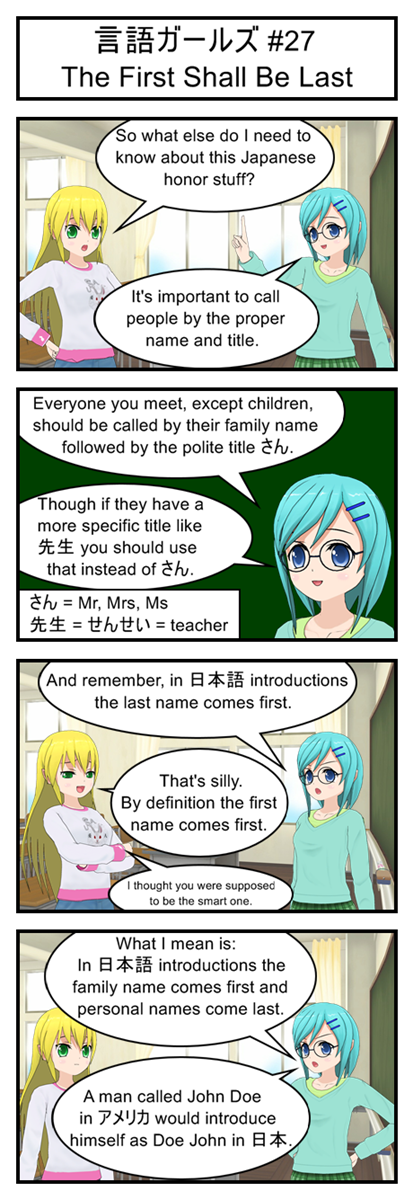
The order of a person’s full name (family then personal or personal then family) is a lot like the question of which side of the street you should drive on: It doesn’t really matter as long as everyone agrees. Of course, if you’re used to doing things one way and then visit a country where they do things the opposite way a little confusion is inevitable, but at least mixing up Japanese name order is unlikely to result in a car crash.
Bonus confusion: When a Japanese person is talking to a foreigner they might decide to switch their names around and give it in western order (family name last). They do this to be helpful but it actually makes it harder to guess which name is their family name since you no longer know for sure which pattern they are following. This is likely to lead to much polite smiling and repeating of names until the mess gets sorted out.
Vocabulary
さん = Mr, Mrs, Ms
先生 = せんせい = teacher
Transcript
言語ガールズ #27
The First Shall Be Last
Yellow: So what else do I need to know about this Japanese honor stuff?
Blue: It’s important to call people by the proper name and title.
Blue: Everyone you meet, except children, should be called by their family name followed by the polite title さん.
Blue: Though if they have a more specific title like 先生 you should use that instead of さん.
Blue: And remember, in 日本語 introductions the last name comes first.
Yellow: That’s silly. By definition the first name comes first.
Yellow: I thought you were supposed to be the smart one.
Blue: What I mean is: In 日本語 introductions the family name comes first and personal names come last.
Blue: A man called John Doe in アメリカ would introduce himself as Doe John in 日本.
